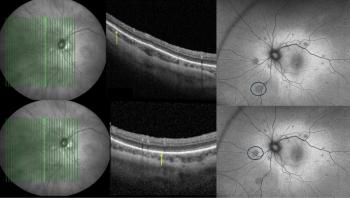
Encouraging results for dry AMD treatment revealed
Roche has announced additional encouraging results of a phase II study with lampalizumab to treat patients with geographic atrophy (GA). The MAHALO study data was presented during the Retina subspeciality day at AAO 2013 in New Orleans, Louisiana, USA.
Roche has announced additional encouraging results of a phase II study with lampalizumab to treat patients with geographic atrophy (GA). The MAHALO study data was presented during the Retina subspeciality day at AAO 2013 in New Orleans, Louisiana, USA.
The phase II trial was a multicentre, randomized, single-masked, controlled study that examined the safety, tolerability and evidence of activity of lampalizumab in patients with GA associated with AMD. Each patient received injections of lampalizumab in one eye either monthly or every other month for a period of 18 months. The primary endpoint was change of GA from baseline to 18 months compared to control, however, four genetic biomarkers were also examined, including the complement factor H (CFH), C3, C2/CFB and CFI. Out of these, a sub-population of the study group that was positive for the biomarker CFI was found to have a statistically significant decrease in GA rate of 44% at 18 months (p
"The phase II results are good news for patients with GA, a major vision-impairing disease where there is currently no treatment available," said Richard Scheller, PhD, head of Genentech Research and Early Development. "These preliminary biomarker data show the CFI biomarker could help identify patients most likely to respond to treatment with lampalizumab."
For more information please visit
Newsletter
Get the essential updates shaping the future of pharma manufacturing and compliance—subscribe today to Pharmaceutical Technology and never miss a breakthrough.













































